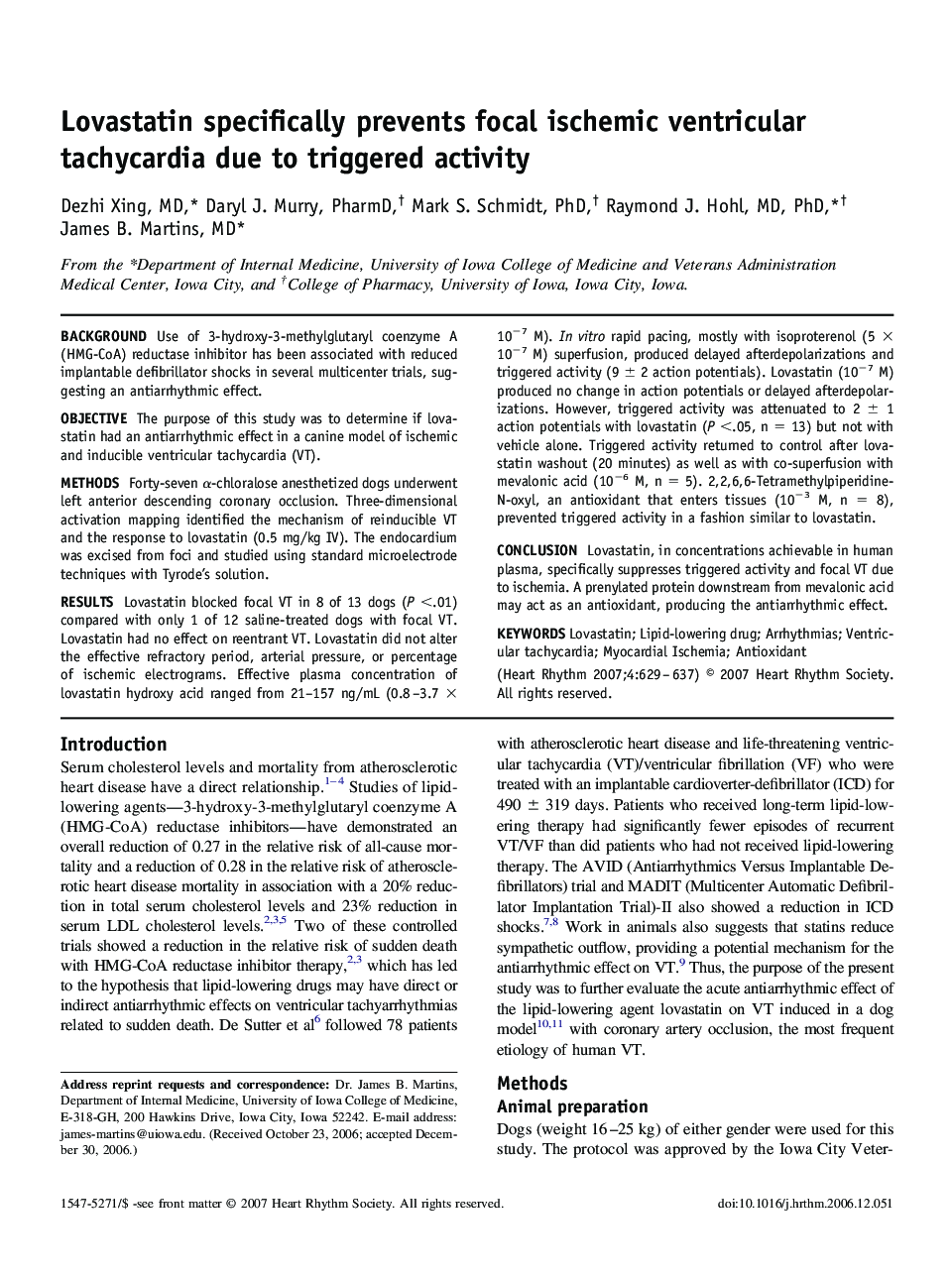| Article ID | Journal | Published Year | Pages | File Type |
|---|---|---|---|---|
| 2924968 | Heart Rhythm | 2007 | 9 Pages |
BackgroundUse of 3-hydroxy-3-methylglutaryl coenzyme A (HMG-CoA) reductase inhibitor has been associated with reduced implantable defibrillator shocks in several multicenter trials, suggesting an antiarrhythmic effect.ObjectiveThe purpose of this study was to determine if lovastatin had an antiarrhythmic effect in a canine model of ischemic and inducible ventricular tachycardia (VT).MethodsForty-seven α-chloralose anesthetized dogs underwent left anterior descending coronary occlusion. Three-dimensional activation mapping identified the mechanism of reinducible VT and the response to lovastatin (0.5 mg/kg IV). The endocardium was excised from foci and studied using standard microelectrode techniques with Tyrode’s solution.ResultsLovastatin blocked focal VT in 8 of 13 dogs (P <.01) compared with only 1 of 12 saline-treated dogs with focal VT. Lovastatin had no effect on reentrant VT. Lovastatin did not alter the effective refractory period, arterial pressure, or percentage of ischemic electrograms. Effective plasma concentration of lovastatin hydroxy acid ranged from 21–157 ng/mL (0.8–3.7 × 10−7 M). In vitro rapid pacing, mostly with isoproterenol (5 × 10−7 M) superfusion, produced delayed afterdepolarizations and triggered activity (9 ± 2 action potentials). Lovastatin (10−7 M) produced no change in action potentials or delayed afterdepolarizations. However, triggered activity was attenuated to 2 ± 1 action potentials with lovastatin (P <.05, n = 13) but not with vehicle alone. Triggered activity returned to control after lovastatin washout (20 minutes) as well as with co-superfusion with mevalonic acid (10−6 M, n = 5). 2,2,6,6-Tetramethylpiperidine-N-oxyl, an antioxidant that enters tissues (10−3 M, n = 8), prevented triggered activity in a fashion similar to lovastatin.ConclusionLovastatin, in concentrations achievable in human plasma, specifically suppresses triggered activity and focal VT due to ischemia. A prenylated protein downstream from mevalonic acid may act as an antioxidant, producing the antiarrhythmic effect.
